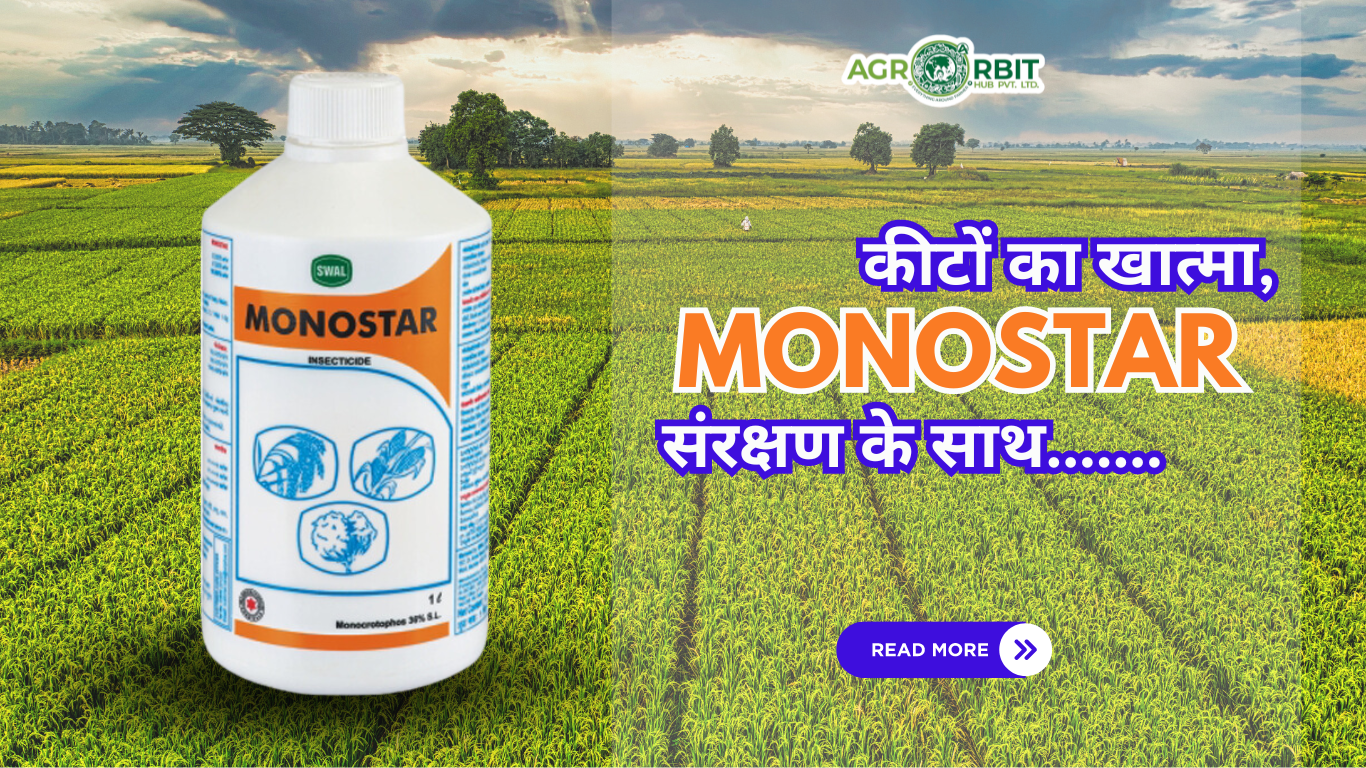


Unlocking the Power of Monostar: A Comprehensive Guide to its Uses and Advantages in Agriculture.
“Unlocking the Power of Monostar: A Comprehensive Guide to its Uses and Advantages in Agriculture”
Kill insects in one stroke
In the realm of modern agriculture, the battle against
pests and diseases is an ongoing challenge. Farmers are constantly seeking
effective solutions to protect their crops and maximize yields. In this endeavour,
Monostar emerges as a reliable ally, offering a potent Défense mechanism
against a wide array of pests. Let's delve deeper into the uses and advantages
of Monostar, a systemic insecticide and acaricide that is revolutionizing pest
control in agriculture.
Monostar is a highly
effective insecticide and acaricide that exhibits both contact and stomach
action. This systemic solution is designed to provide comprehensive protection
against a broad spectrum of pests, making it an invaluable asset for farmers
across various crops..
Monocrotophos appears as colorless crystals with a mild ester odor, commercial product is a reddish-brown solid. Used as a fast acting insecticide with both systemic and contact action against a wide range of pests on cotton, sugar cane, tobacco, potatoes, peanuts, tomatoes, and ornamentals Top of Form.
Mode of Action
One of the key features of
Monostar is its dual mode of action, which includes both contact and stomach
activity. Upon application, it swiftly targets pests through direct contact and
ingestion, ensuring swift and effective elimination.
Versatile Application
Monostar boasts a versatile
application, making it suitable for a wide range of crops. From paddy fields to
cotton plantations, from citrus orchards to tea gardens, Monostar proves its
efficacy across diverse agricultural landscapes. Major crops including paddy,
maize, cotton, tea, pulses, mustard, citrus, and mango benefit from its
protective shield.
Target Pests
The efficacy of Monostar extends
to combatting various notorious pests that pose significant threats to crop
health and productivity. These include but are not limited to Brown Plant
Hopper (BPH), Green Leafhopper (GLH), Yellow Stem Borer, Leaf Roller/Folder,
Aphids, Thrips, and Whitefly. By targeting these pests, Monostar ensures that
crops remain safeguarded throughout their growth cycle.
Optimal Dosage
To achieve optimal results, it
is essential to adhere to the recommended dosage of Monostar. With a dosage of
350 ml per acre, farmers can effectively manage pest infestations and maintain
crop health without compromising on safety or efficacy.
Advantages of Monostar
1. Comprehensive Pest Control: Monostar provides
robust protection against a wide range of pests, ensuring comprehensive pest
management for various crops.
2. Systemic Action: Its systemic action ensures
that the entire plant is protected from pests, offering sustained Défense
throughout the crop's lifecycle.
3. Versatility: Monostar's versatility allows for
its application across multiple crops, making it a cost-effective solution for
farmers with diverse agricultural interests.
4. Enhanced Yield Potential: By safeguarding crops
against pest infestations, Monostar contributes to improved yield potential and
enhanced overall crop quality.
5. Long-lasting Effectiveness: With its extended
shelf life and prolonged efficacy, Monostar delivers long-lasting protection,
reducing the need for frequent reapplication and minimizing operational costs.
Conclusion
In conclusion, Monostar emerges
as a game-changer in the realm of agricultural pest management. Its systemic
action, broad-spectrum efficacy, and long-lasting effectiveness make it an
indispensable tool for farmers striving to protect their crops and optimize
yields. By harnessing the power of Monostar, farmers can embark on a journey
towards sustainable agriculture, where crop protection is not just a necessity
but a promise of prosperity.
Monocrotophos appears as colorless crystals with a
mild ester odor, commercial product is a reddish-brown solid. Used as a
fast acting insecticide with both systemic and contact action against a wide
range of pests on cotton, sugar cane, tobacco, potatoes, peanuts, tomatoes, and
ornamentals Top of Form







